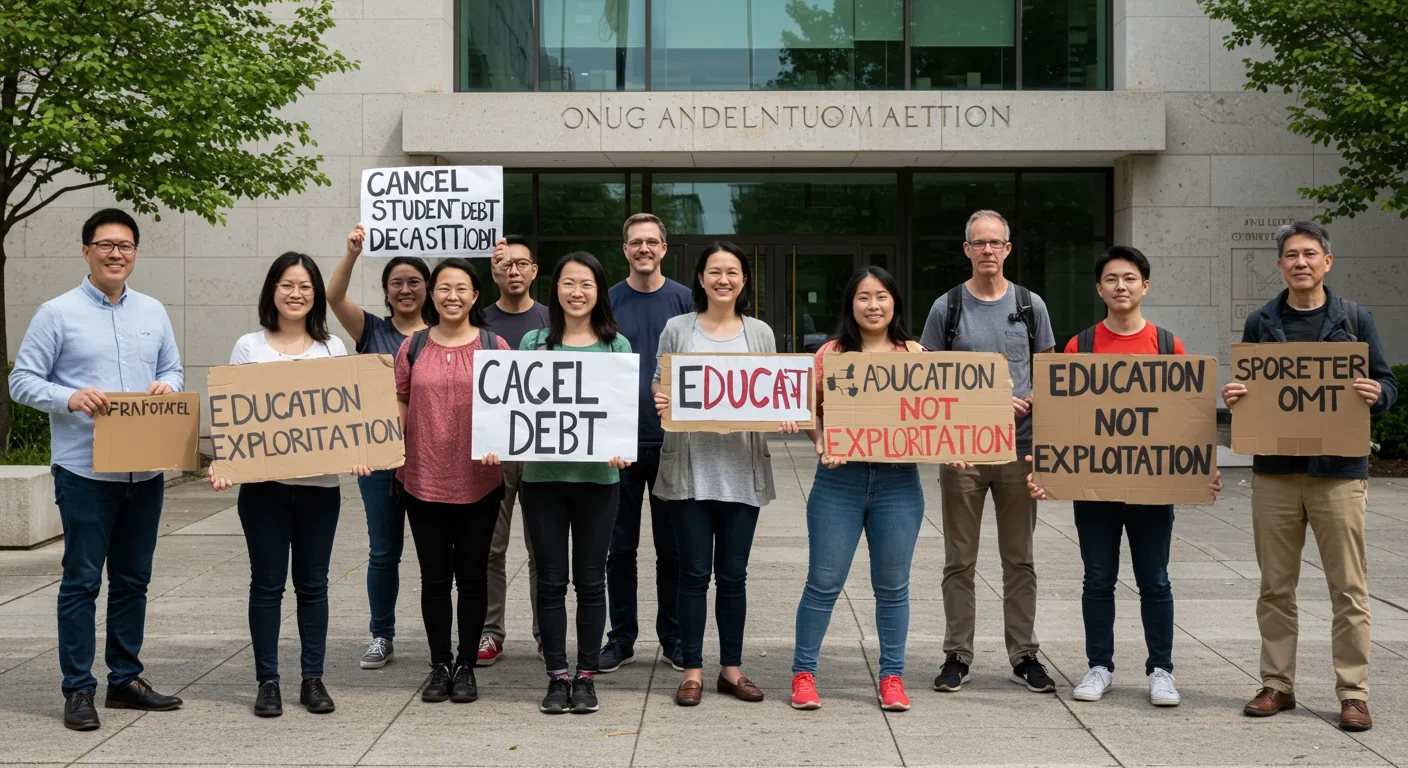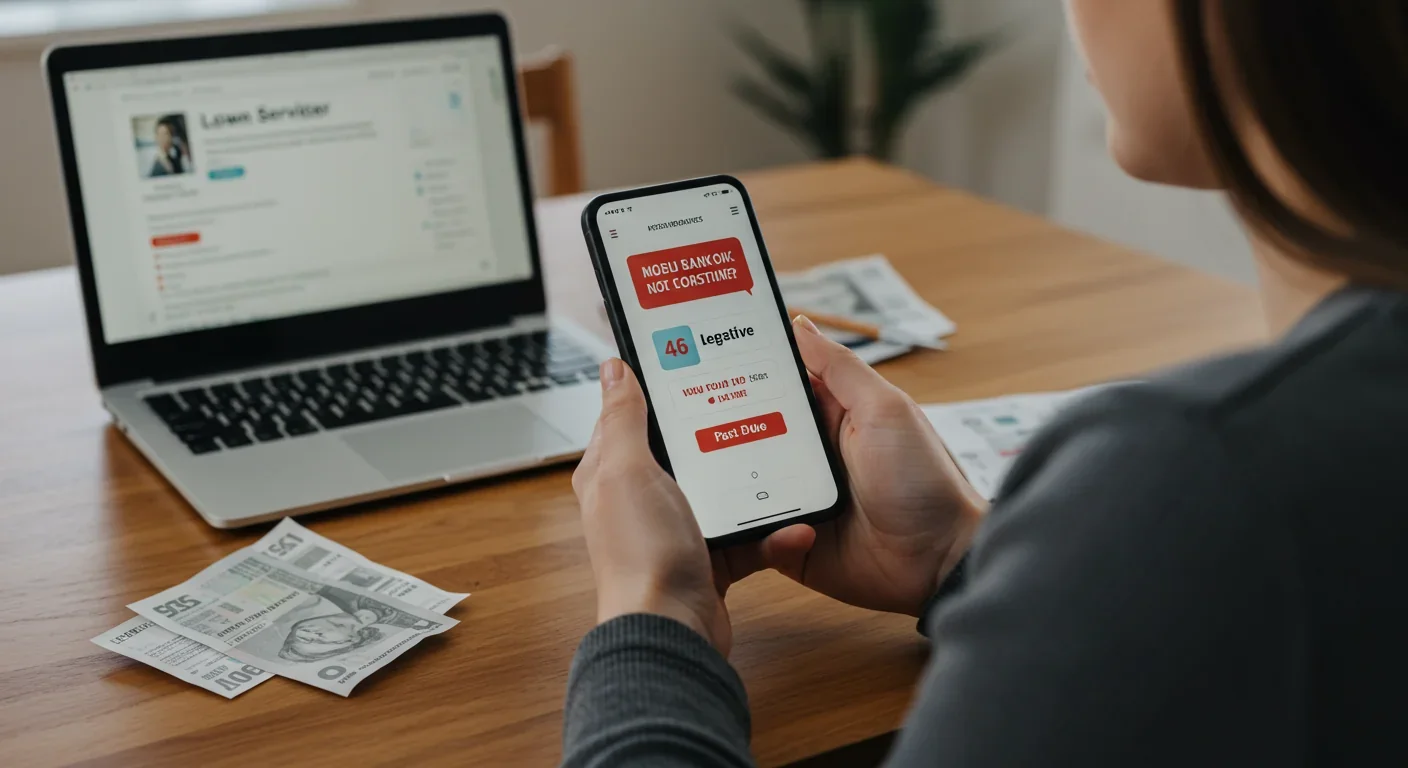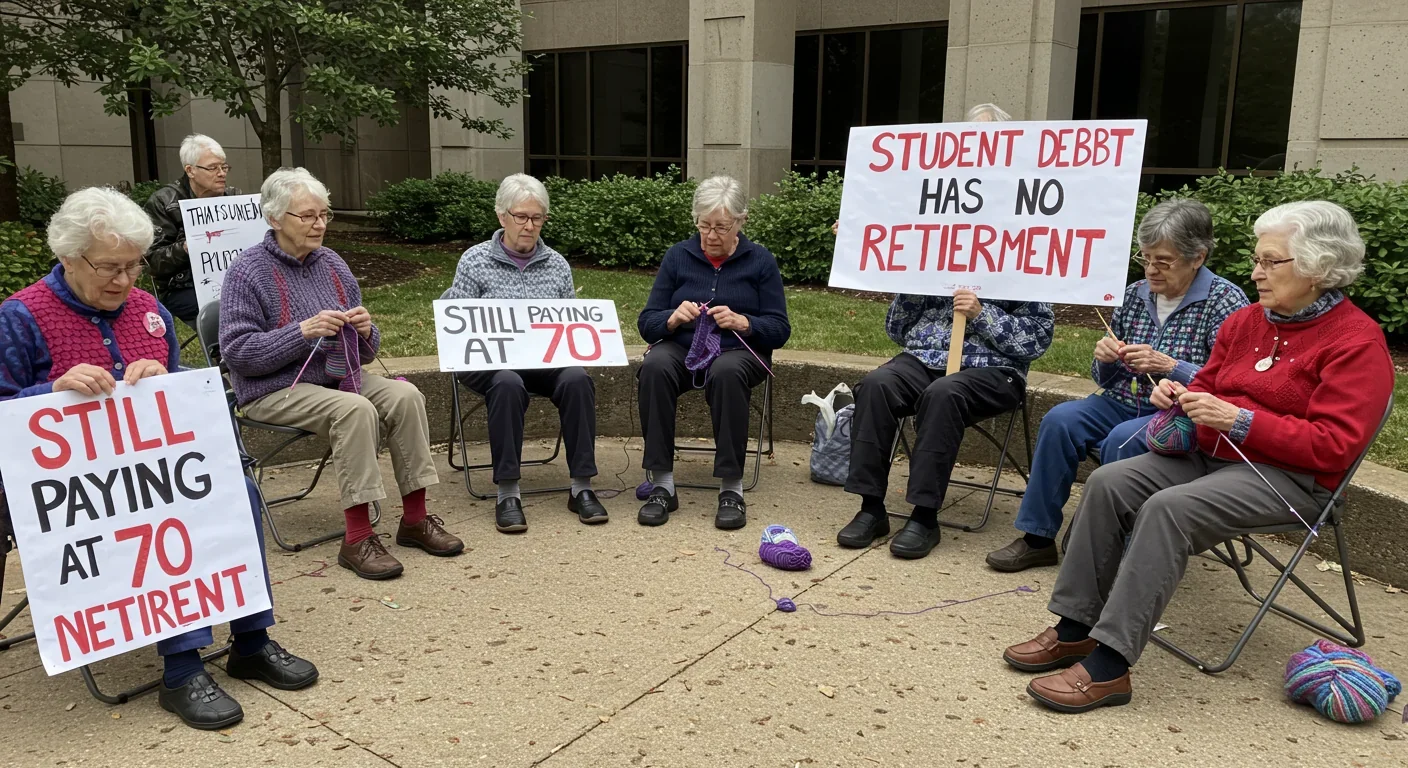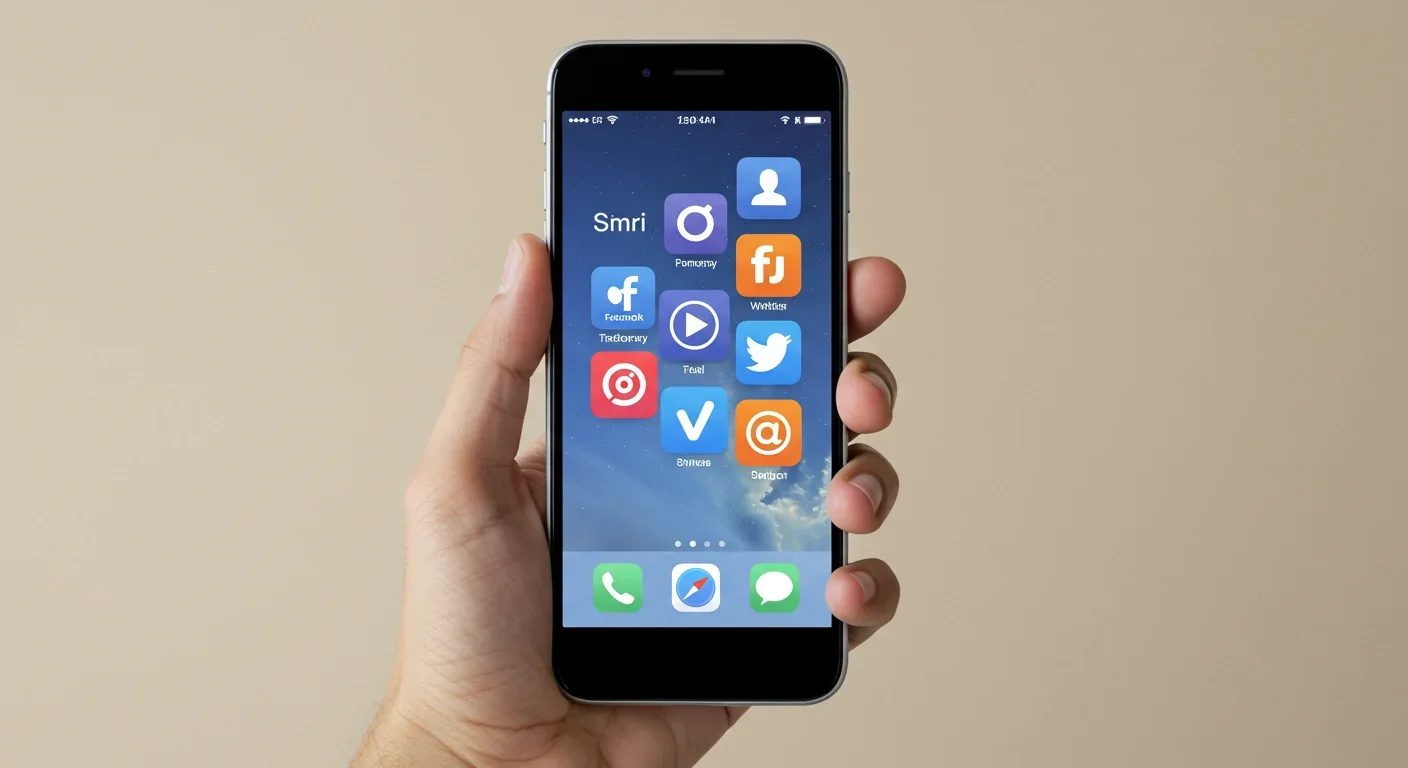The Childcare Cliff: When Working Becomes Too Expensive

TL;DR: Millions of student loan borrowers are refusing to repay as an organized protest against a $1.77 trillion debt system they view as exploitative. With one in three borrowers at risk of default by 2025, this movement challenges whether the entire higher education financing model can survive.

In the fall of 2024, something unprecedented happened. As federal student loan payments resumed after a pandemic pause, millions of borrowers simply didn't pay. Not because they forgot. Not because they couldn't navigate the repayment system. They chose not to—as an act of collective defiance against a system they believe is fundamentally broken.
This wasn't random chaos. It was the birth of what activists call the modern student debt strike—a coordinated refusal to participate in loan repayment until the system itself changes. By mid-2025, nearly one in three federal student loan borrowers found themselves at risk for default, a rate that shocked even seasoned education finance experts. The question is no longer whether borrowers will pay, but whether the entire architecture of higher education financing can survive this rebellion.
Student debt in America has reached a scale that defies comprehension. As of 2025, Americans owe approximately $1.77 trillion in student loans, distributed among roughly 43 million borrowers. The average borrower carries $38,792 in debt. For many, monthly payments consume 10-20% of their income—sometimes more.
But numbers alone don't capture why people are willing to risk financial ruin to make a point. The real story is what happens when an entire generation realizes the promise they were sold—go to college, get a degree, build a life—was built on sand.
Consider the mechanics of default. Miss one payment and your loan becomes delinquent immediately. You'll face late fees up to 6% of the monthly payment. Miss payments for 270 days and you're in default. At that point, your entire loan balance—plus accumulated interest—becomes due immediately. The government can garnish your wages without a court order, seize your tax refunds, and even withhold Social Security benefits.
You'd think these consequences would terrify borrowers into compliance. Instead, they're fueling rage.
The roots of the debt strike movement stretch back to 2011, when Strike Debt emerged from the Occupy Wall Street protests. That early effort was more performance art than political strategy—activists bought portfolios of medical and student debt for pennies on the dollar, then forgave them in public ceremonies.
But something shifted after the pandemic. When federal student loan payments were suspended in March 2020, millions of borrowers experienced what life could be like without that monthly burden. They paid down credit cards. They built emergency savings. Some bought homes. Then, in September 2023, the payments came back.
The timing couldn't have been worse. Inflation had eroded purchasing power. Rent had spiked in many cities. The Supreme Court had just struck down President Biden's debt forgiveness plan. Borrowers who thought relief was coming suddenly faced decades more of payments.
This time, the protest wasn't symbolic. Organizations like the Debt Collective began organizing borrowers to collectively refuse payment. Their pitch was simple: creditors need debtors more than debtors need creditors. If enough people stop paying at once, the system loses its leverage.
Modern debt strikers aren't simply ignoring bills. They're using sophisticated strategies borrowed from labor organizing and civil disobedience movements.
First, there's safety in numbers. Individual default is financially catastrophic—it destroys your credit, subjects you to wage garnishment, and closes off future educational opportunities. But if thousands default simultaneously, the system can't process them all. Collection agencies get overwhelmed. The political cost of mass garnishment becomes prohibitive.
Second, strikers are exploiting regulatory gray areas. After payments resumed, the Department of Education created an "on-ramp period" through September 2024, during which missed payments wouldn't trigger default or credit reporting. Activists encouraged borrowers to use this breathing room strategically—not as a temporary reprieve, but as a window to organize.
Third, they're weaponizing bureaucracy. The student loan system is a labyrinth of servicers, collection agencies, and federal departments. Borrowers are filing borrower defense claims en masse, alleging their schools misled them. Each claim requires individual review. Processing tens of thousands of these claims simultaneously gums up the entire apparatus.

Fourth, strikers are going public. Older borrowers, some in their 60s and 70s with decades of unpaid student debt, have staged "knit-ins" outside Department of Education offices. The visual of grandmothers knitting baby blankets while protesting student debt creates a narrative problem for the government. Are you really going to garnish Social Security checks from retirees?
Here's where it gets complicated. You cannot go to jail for not paying student loans—debtors' prisons are unconstitutional. But the federal government has collection powers that would make any private creditor jealous.
They can garnish up to 15% of your disposable income without a court order. They can seize your entire tax refund. If you're on Social Security, they can take 15% of your benefits (though they must leave you with at least $750 per month). These aren't theoretical threats. Following the resumption of collection activities in May 2025, the government began exercising these powers aggressively.
The legal landscape gets murkier when we consider borrower defense claims. If your school engaged in fraud or misrepresentation, you can potentially have your loans discharged. Schools like DeVry University have faced legal troubles over misleading employment statistics. Thousands of students who attended for-profit colleges are now arguing they were victims of predatory practices.
But here's the catch: filing a borrower defense claim doesn't automatically stop collection. You still owe the money while your claim is reviewed. The review process can take years. During that time, interest keeps accumulating.
The Trump administration has further complicated matters by attempting to end student loan relief programs for workers at progressive nonprofits and denying access to affordable repayment plans in response to right-wing court orders. Each policy change creates new legal battles, new confusion, and new opportunities for organized resistance.
What happens to the economy when a significant portion of borrowers stop paying? We're about to find out.
Federal student loans are assets on the government's balance sheet. When borrowers default en masse, those assets lose value. That affects federal budget projections, which in turn affects everything from deficit calculations to policy debates about new spending.
Then there's the ripple effect through the financial system. While most federal loans are held directly by the Department of Education, loan servicers—companies like MOHELA and Navient—make money processing payments. A debt strike cuts their revenue. Borrowers have sued MOHELA for alleged mismanagement, adding legal costs to lost revenue.
The credit reporting agencies face their own crisis. If millions of borrowers have defaulted loans on their credit reports, do those reports still provide useful information to lenders? When default becomes common, it stops being a reliable signal of individual creditworthiness.
But there's another economic argument strikers make: maybe mass default is good for the economy. Every dollar that goes to student loan payments is a dollar not spent on goods and services. During the pandemic payment pause, the extra cash flow helped fuel consumer spending and economic recovery. Strikers argue that permanent debt relief would have a similar stimulus effect.
Critics counter that this is short-term thinking. If the government starts forgiving loans on a mass scale, what happens to future lending? Do interest rates rise to compensate for default risk? Do fewer students get loans in the first place? These aren't academic questions—they're the difference between expanding access to education and restricting it.
The debt strike has forced policymakers to confront questions they've avoided for decades. Here are the main proposals on the table:
Universal Debt Cancellation: Forgive some or all student debt outright. Estimates suggest canceling $50,000 per borrower would cost approximately $1 trillion but would provide immediate relief to millions. Critics call it a regressive giveaway to college graduates while less-educated workers get nothing.
Free College: Make public universities tuition-free, eliminating the need for future loans. This addresses tomorrow's students but does nothing for the 43 million people already carrying debt. Also requires massive new funding or substantial cuts to university budgets.
Income-Driven Repayment Reform: Tie monthly payments to income and forgive balances after 20-25 years. These programs already exist but are complex and poorly administered. Many borrowers who should qualify don't know about them or can't navigate the application process.
Bankruptcy Reform: Currently, student loans are nearly impossible to discharge in bankruptcy. Changing this would give borrowers an escape valve but would also signal to lenders that student loans are riskier, potentially reducing future lending.
Tuition Regulation: Cap what schools can charge, reducing the need for large loans. This requires federal legislation and would face fierce opposition from universities that rely on tuition revenue.

Tax-Based Repayment: Replace loans with a graduate tax—students pay nothing upfront but owe a percentage of their future income. Australia uses this model. It aligns incentives better than fixed loans but raises complex questions about implementation in the U.S. tax system.
None of these solutions is perfect. All involve tradeoffs. But the status quo—$1.77 trillion in debt, rising default rates, and a generation locked out of homeownership and retirement savings—is clearly unsustainable.
Not all borrowers are created equal in this crisis. The strikers tend to frame this as borrowers versus the system, but the reality is more textured.
Graduate students and professional school attendees carry the largest individual balances—often six figures for doctors, lawyers, and MBA holders. But these borrowers also typically have the highest earning potential. A doctor carrying $300,000 in medical school debt will likely pay it off eventually, even if slowly.
The real crisis is among borrowers who never finished their degrees or who attended low-quality programs. These individuals carry debt without the credential that's supposed to make it worthwhile. They're disproportionately from low-income backgrounds and disproportionately likely to default.
There's also a racial dimension. Black borrowers default at higher rates than white borrowers, even controlling for degree completion and institution type. This reflects both wealth gaps that make repayment harder and systemic factors like discrimination in hiring and lending.
When strikers advocate for universal debt cancellation, they're often trying to address these inequities. But means-tested relief—canceling debt only for low-income borrowers—might target help more effectively while costing less. The debate over which approach is both fairer and more politically feasible continues to fracture the movement.
Strip away the policy wonkery and you're left with a moral question: should people have to pay back money they borrowed?
The traditional answer is yes. You signed a promissory note. You benefited from the education. Repaying debt is a basic social obligation. Reneging on that obligation is theft from taxpayers who fund the federal loan program.
Strikers offer a counter-narrative. They argue the debt itself is illegitimate—the result of a system designed to extract wealth from young people at their most vulnerable. Tuition has increased far faster than inflation for decades while state funding for public universities has declined. Students are told they need a degree to compete in the modern economy, then saddled with debt they can't repay.
From this perspective, refusing to pay isn't theft. It's resistance to exploitation. It's the same moral logic that justified rent strikes during the Depression or sit-ins during the Civil Rights Movement. Unjust systems don't deserve compliance.
There's also a generational angle. Baby boomers could pay for college with a summer job. Tuition at public universities was essentially free in many states. But over decades, that generation voted for tax cuts and defunded higher education, pushing costs onto students. Now they lecture millennials and Gen Z about responsibility. It's no wonder younger borrowers feel the game was rigged.
But here's the uncomfortable truth the strikers don't always acknowledge: most people do pay their loans. Millions of borrowers—disproportionately from middle-class families—work, save, and slowly chip away at balances. They made sacrifices. They lived with roommates longer. They delayed having kids. If the government now forgives debt for strikers, what about those who already paid? Do they get a refund? Or are they just suckers?
As I write this, the on-ramp period has ended. The full apparatus of federal collections is back online. Wages are being garnished. Tax refunds are being seized. Credit reports are being dinged.
The debt strike movement faces a test. Can they maintain momentum when the consequences become real? Or will borrowers, faced with actual financial pain, quietly return to repayment?
Early signs are mixed. Delinquency rates remain high, suggesting many borrowers continue to withhold payment. But it's unclear how many are striking versus simply struggling. The Debt Collective claims thousands of members, but that's a fraction of the millions in default.
Political will is another variable. If a future administration sees debt cancellation as both morally right and politically advantageous, the strike could win. But if policymakers dig in—treating strikers as lawbreakers rather than protesters—the movement could collapse under the weight of garnishments and destroyed credit.
There's also the possibility of unintended consequences. If the strike succeeds in forcing mass debt cancellation, what happens to future students? Do lenders tighten requirements? Do interest rates rise? Does the government exit the student loan business entirely, returning us to the pre-1965 era when college was accessible only to the wealthy?
The student debt strike is about more than money. It's a referendum on the social contract in America.
For most of the 20th century, the deal was straightforward: work hard, get educated, and you'll have a shot at the middle class. College was the gateway. Student loans were the bridge.
But what happens when the bridge collapses under its own weight? When the cost of crossing leaves you in debt for decades? When the promised middle-class life on the other side never materializes?
Young people aren't stupid. They can see the math. They watch their parents, still paying off student loans in their 50s. They see wages that haven't kept pace with education costs. They see a housing market they can't afford to enter and retirement accounts they can't afford to fund.
The debt strike is their answer. It's a collective rejection of a system that treats education as a private investment rather than a public good. It's a bet that if enough people refuse to play by the rules, the rules will have to change.
Whether that bet pays off remains to be seen. But one thing is certain: the old system is broken. The only question is what comes next—reform or revolution, negotiation or collapse. The strikers are forcing us to choose.
And maybe that's the point. Sometimes the only way to fix a broken system is to break it completely first.

Wormholes collapse instantly because they require exotic matter with negative energy that doesn't exist in useful quantities, and quantum instabilities destroy them faster than light can cross their throats, making spacetime shortcuts a physics impossibility.

Scientific studies reveal electromagnetic hypersensitivity sufferers experience genuine symptoms but cannot detect EMF exposure better than chance, pointing to the nocebo effect rather than electromagnetic fields as the primary cause.

Mycelium packaging grows from agricultural waste in days, decomposes in weeks, and is already shipping in Dell computers and IKEA furniture—proving fungi can replace foam.

Our attraction to impractical partners stems from evolutionary signals, attachment patterns formed in childhood, and modern status pressures. Understanding these forces helps us make conscious choices aligned with long-term happiness rather than hardwired instincts.

Virtual reality experiments are revealing how honeybees form sophisticated cognitive maps with brains smaller than sesame seeds, revolutionizing our understanding of intelligence and inspiring energy-efficient robots while guiding pollinator conservation.

Millions of student loan borrowers are refusing to repay as an organized protest against a $1.77 trillion debt system they view as exploitative. With one in three borrowers at risk of default by 2025, this movement challenges whether the entire higher education financing model can survive.

Blockchain-based social networks like Bluesky, Mastodon, and Lens Protocol are growing rapidly, offering user data ownership and censorship resistance. While they won't immediately replace Facebook or Twitter, their 51% annual growth rate and new economic models could force Big Tech to fundamentally change how social media works.